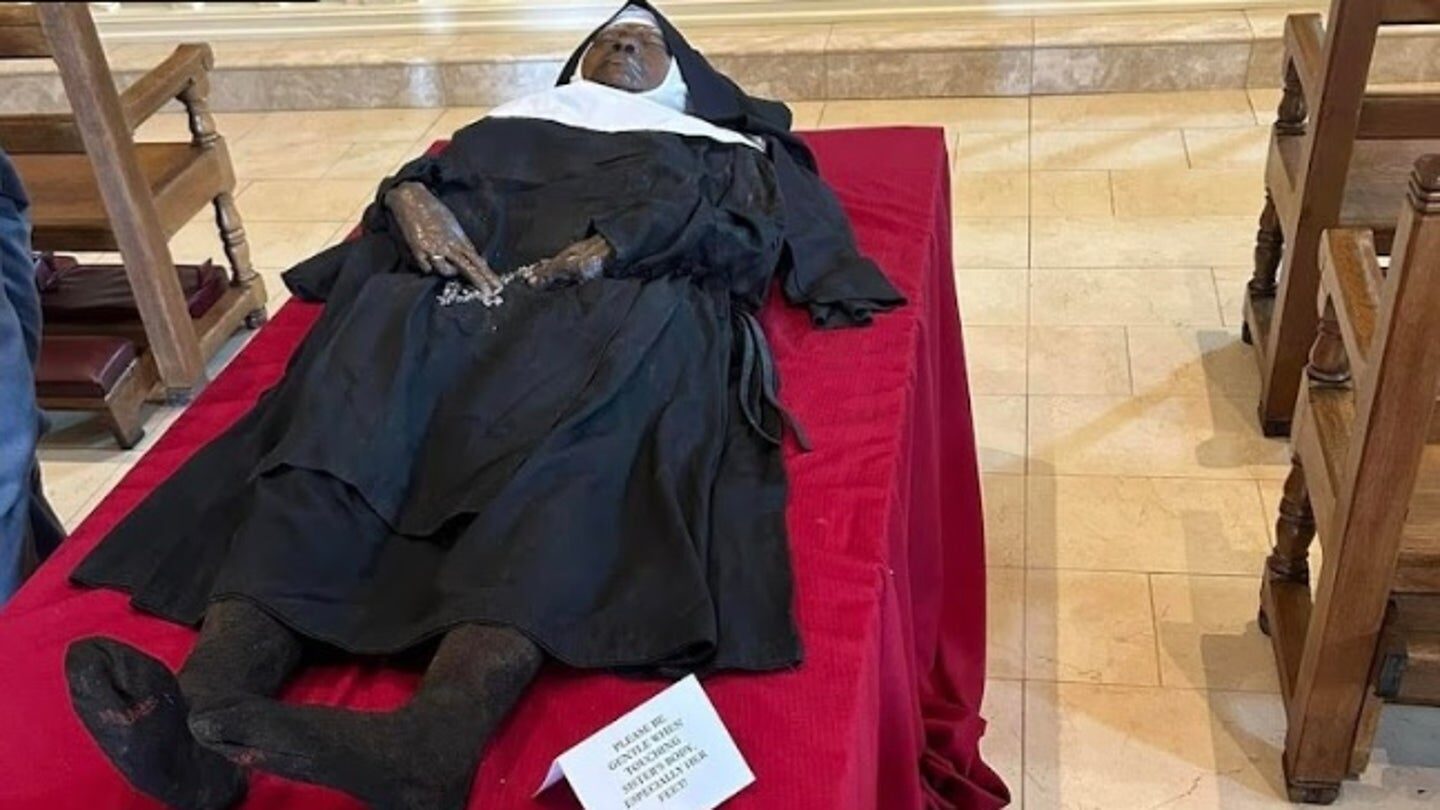
Leaders in the Catholic Church contacted Rome and commissioned an investigation into the situation after the remains of Sister Wilhelmina Lancaster were exhumed last week.
Lancaster's corpse appears to show little sign of degradation or rotting despite having been buried in 2019 — a phenomenon considered a possible sign of sainthood in Catholicism.
Her body was not embalmed before her burial and her casket was made of simple wood without an exterior layer.
David Hess associate professor in the Salt Lake Community College mortuary science department told Catholic News Agency that the deceased nun's pristine condition is hard to explain.
"If the body was not embalmed, and it was still intact after four years, that one kind of throws me," he told CNA. "I would have expected the body to be decomposed, maybe not all the way down to bone, but at least severely decomposed."
Lancaster's body has been on open-air display for visitations by pilgrims. However, she has not been declared a "saint" — the Christian term for a person who has entered heaven.
In order to be declared a saint, outside investigators must confirm multiple miraculous events surrounding the deceased when asked for intervention by living Christians. The Catholic Church defines these miracles as "a sign or wonder such as a healing, or control of nature, which can only be attributed to divine power."
It is a process that can take many years and deep investigations. Many petitions for sainthood end without success due to a lack of evidence.
In many sects of Christianity, the bodies of those who are believed to be in heaven are called "relics" and are used in worship. Relics can also be objects touched by a saint.
Bishop Vann Johnston of the Diocese of Kansas City-St. Joseph released a statement on the investigation into Lancaster's condition.
The bishop urged prayer and sobriety as the Catholic Church begins looking into the circumstances.
"The condition of the remains of Sister Wilhelmina Lancaster has understandably generated widespread interest and raised important questions," said the prelate. "At the same time, it is important to protect the integrity of the mortal remains of Sister Wilhelmina to allow for a thorough investigation."
He continued, "I invite all the faithful to continue praying during this time of investigation for God's will in the lives of the Benedictines of Mary, Queen of Apostles; for all women religious; and all the baptized in our common vocation to holiness, with hope and trust in the Lord."
Catholics, Coptics, Orthodox, Anglicans, and others practice the veneration of relics as a means of praising God — the practice is traced back to Biblical anecdotes such as the bones of the prophet Elisha bringing a dead man back to life.
Additionally, in the Book of Acts, merely touching St. Paul's garments cured the sick and cast out evil spirits from the afflicted.
Veneration of pious Christians' bones has been documented since the earliest days of Christianity.
Lancaster was the founder of the Benedictine Sisters of Mary, Queen of the Apostles.
Her order plans to hold a precession in her honor and enclose the body in a glass case to better accommodate pilgrims making their way to the monastery in Gower, Missouri.



Comment: USA Today adds some background on Sister Wilhelmina and the crowds that have come to view her body: For more on the rare phenomenon of incorrupt bodies of Catholic and Orthodox saints, see here.